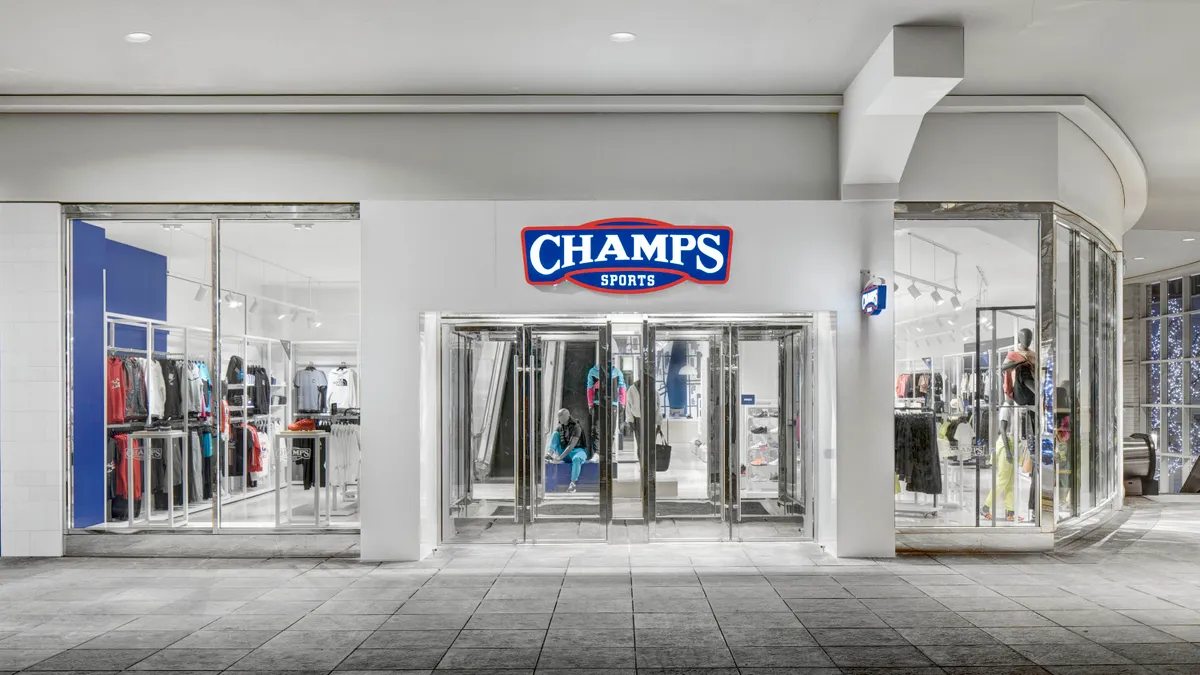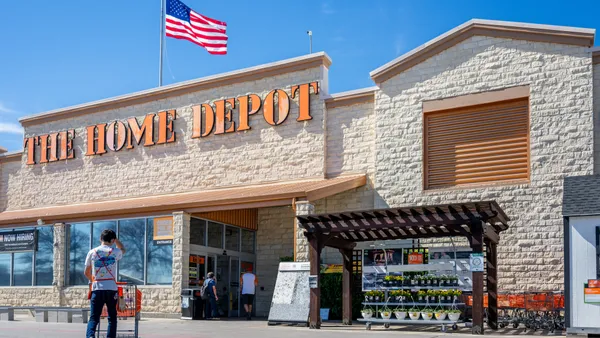Dive Brief:
- Foot Locker CEO Mary Dillon on Monday outlined a new long-term strategy to grow the business as the retailer reported a sales decline of 0.3% in the fourth quarter. The “Lace Up” strategy includes efforts to simplify the business and shutter underperforming banners and stores.
- As a result, the retailer will close approximately 400 stores by 2026, including 200 locations in C and D malls and 200 underperforming stores in A and B malls, executives said on a call with analysts. About 125 Champs stores will close in that period, though other banners will expand.
- Dillon also highlighted that the retailer is “revitalizing” its relationship with key supplier Nike, the results of which will begin to show up this holiday season. The two will focus their efforts on basketball culture and the kids business, among other things.
Dive Insight:
Foot Locker is expecting 2023 to be a reset year — with both sales and comps projected to drop 3.5% to 5.5% — and the retailer will use the next 12 months to simplify the business and invest in other areas.
“Simply stated, we had too much overlap between our banners and some of our smaller banners were adding complexity to our operating model and also diluting our profitability,” Chief Commercial Officer Frank Bracken said on the call. “In North America, we have closed the Lady Foot Locker banner, the Footaction banner, and most recently the Eastbay.com banner.”
The retailer also axed its team sales business and Sidestep banner recently. The culling of underperforming locations is continuing, while store concepts like House of Play are slated for expansion. The retailer is also developing a new “store of the future” concept, which will open its first location in New York City in 2024. The store will feature dedicated women’s, men’s and kids spaces for better inclusivity, and emphasize digital connectivity.
Foot Locker is aiming to attract a larger audience as well and will roll out a new brand platform and campaign later this year to invite more shoppers into the sneakerhead community.
Executives reiterated their desire to broaden the number of brands customers have access to and diversify its product assortment from Nike, forming deeper partnerships with the likes of Puma and New Balance. Those efforts also include a more dedicated emphasis on the running category, which the retailer has aimed to grow by bringing in new brands like Hoka and On.
At the same time, the retailer emphasized that Nike will remain its largest brand partner, and that the two retailers have worked to revitalize their partnership.
“Both companies are committed to growth,” Chief Merchandising Officer Chris Santaella said. “The partnership is focused on creating a strategy that is complementary to the Nike direct-to-consumer strategy. The focus is on consumer sharp points along with an integrated marketplace. The consumer strategy is rooted in Foot Locker’s strengths and heritage in sneaker culture.”














